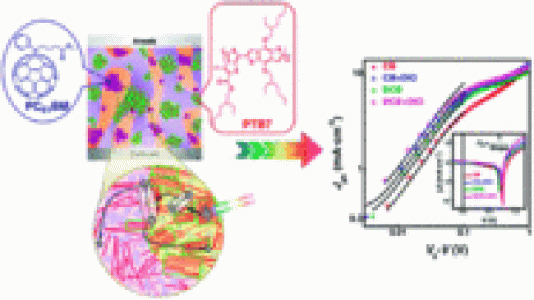
Traditionally, organic photovoltaic (OPV) active layers are viewed as an interpenetrating network of pure polymers and fullerenes with discrete interfaces. Researchers at the Center for Nanoscale Materials and their collaborators at the Advanced Photon Source and Electron Microscopy Center at Argonne, the University of Chicago, Advanced Light Source, NIST, and Oak Ridge National Laboratory have shown that the OPV active layer of high-performance PTB7:fullerene OPV devices, in fact, involves surprising hierarchical nanomorphologies ranging from several nanometers of crystallites to tens of nanometers of nanocrystallite aggregates in intermixed PTB7-rich and fullerene-rich domains, themselves hundreds of nanometers in size.
These hierarchical nanomorphologies are coupled to significantly enhanced exciton dissociation, which consequently contribute to photocurrent, indicating that the nanostructural characteristics at multiple length scales is one of the key factors determining the performance of PTB7 copolymer—and likely most polymer:fullerene systems—in OPV devices.
This new understanding will lead to a rethinking of the idealized morphology in OPVs, and, ultimately, to pathways for further performance optimization.
Read the study, “Hierarchical Nanomorphologies Promote Exciton Dissociation in Polymer/Fullerene Bulk Heterojunction Solar Cells”, at Nano Letters.